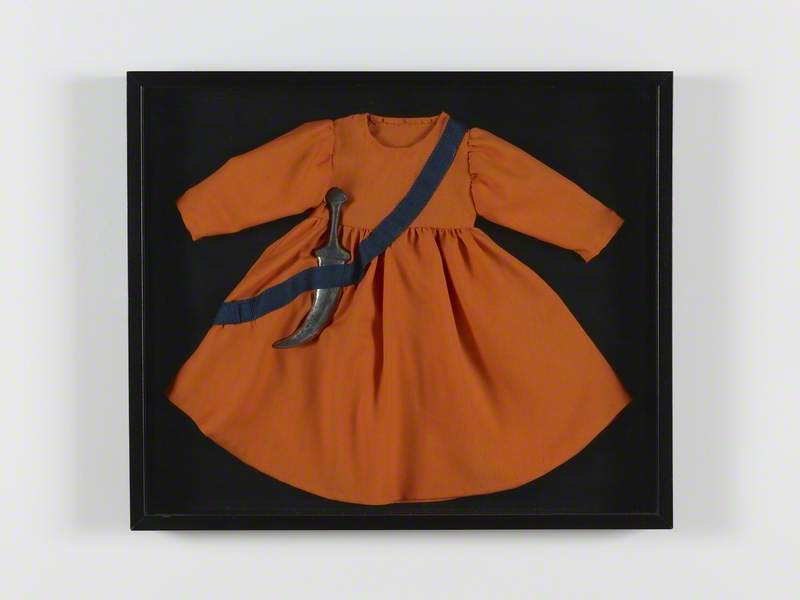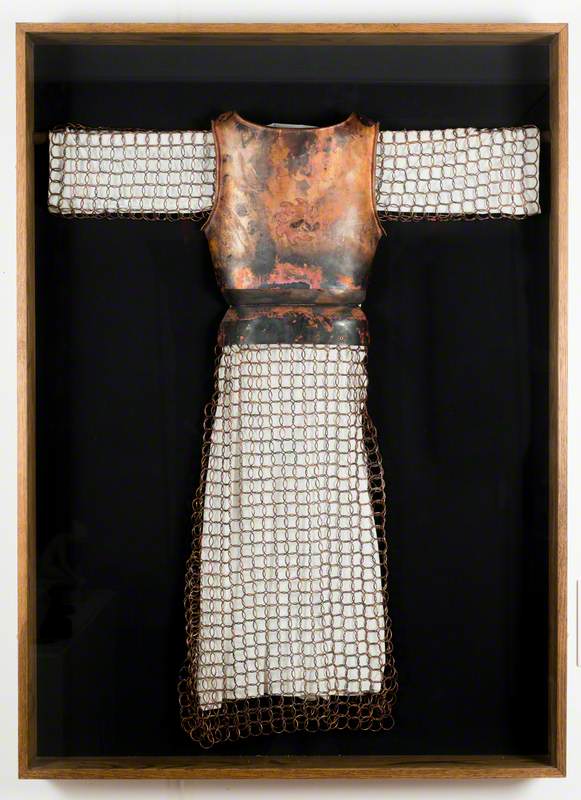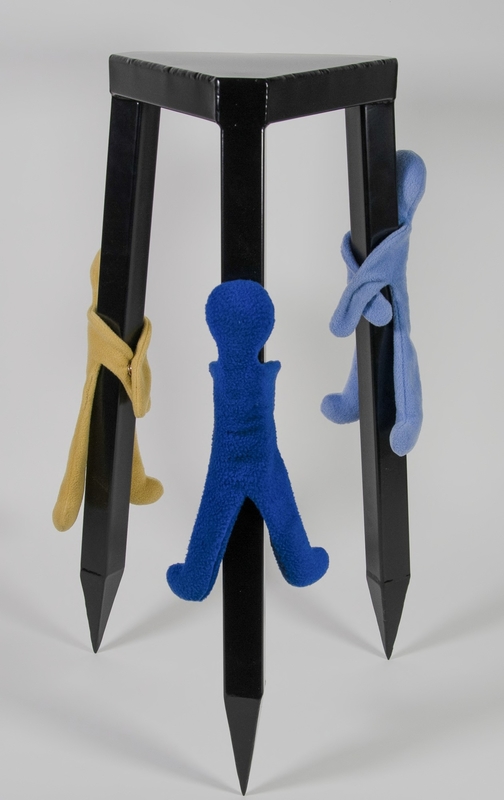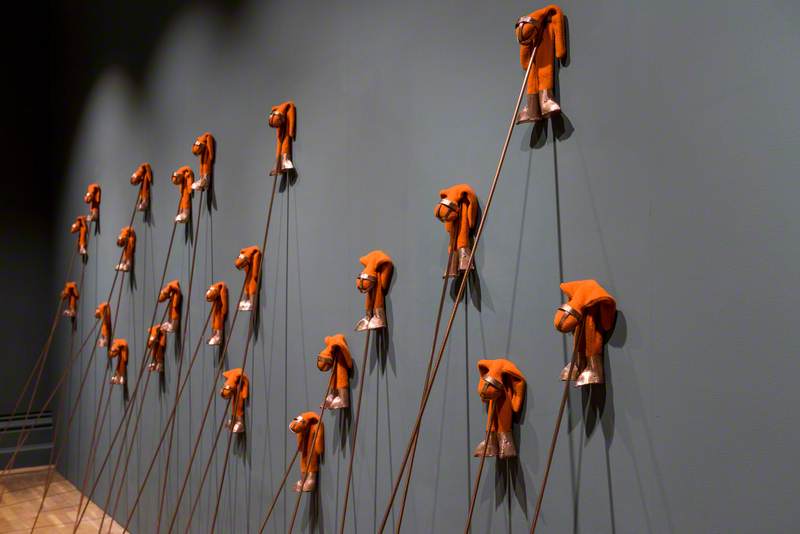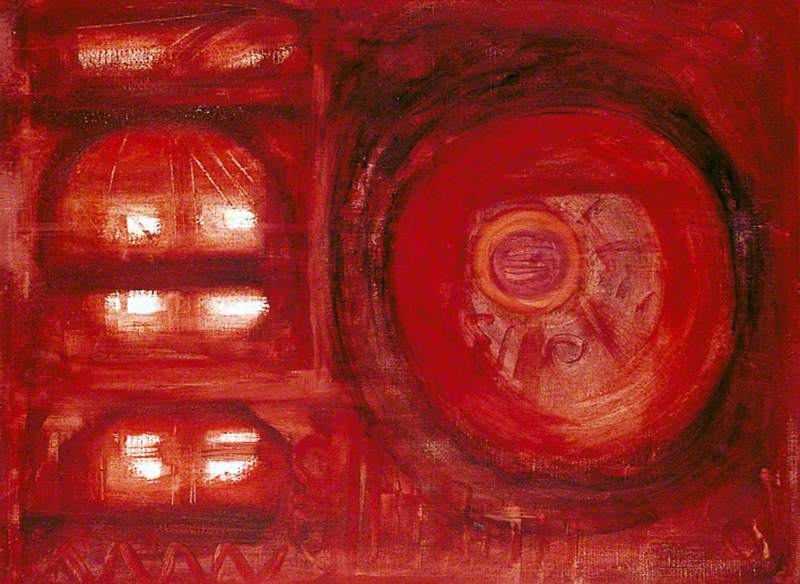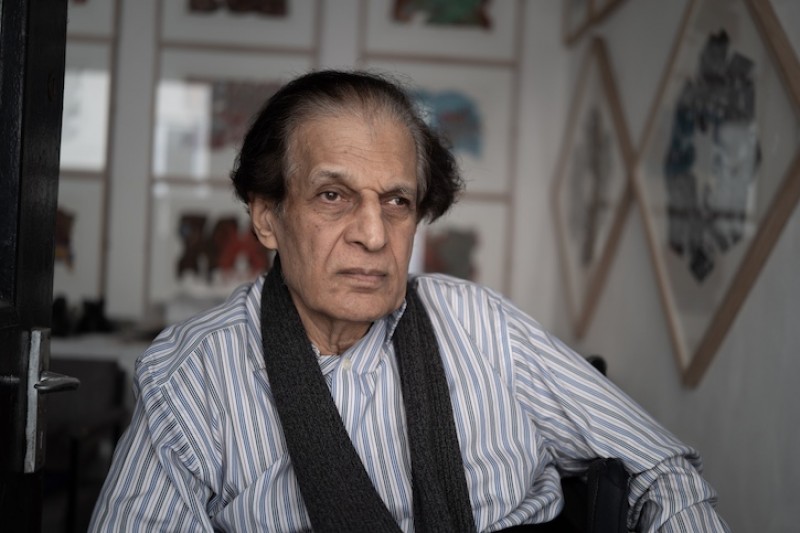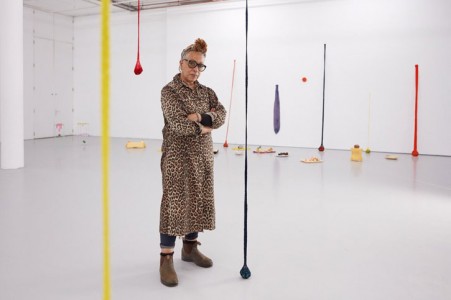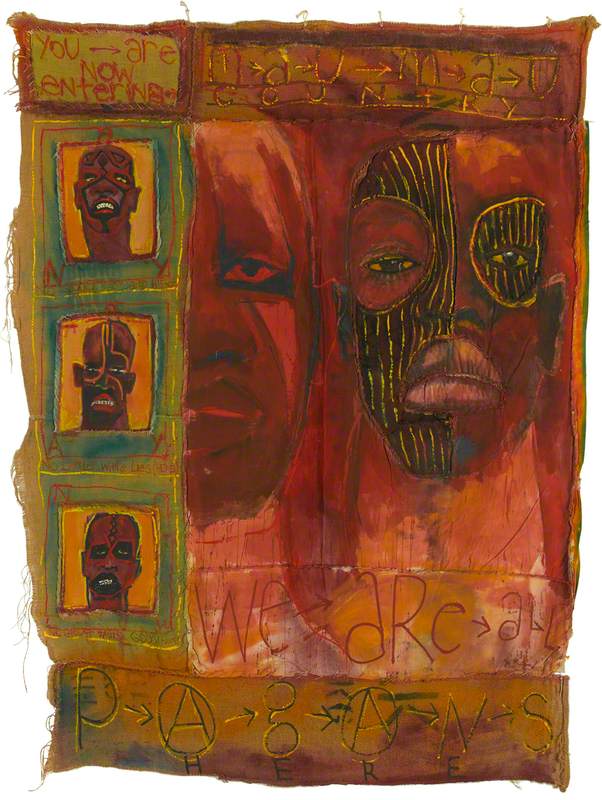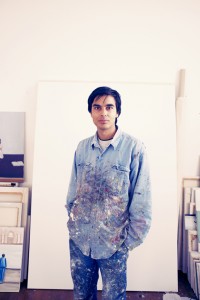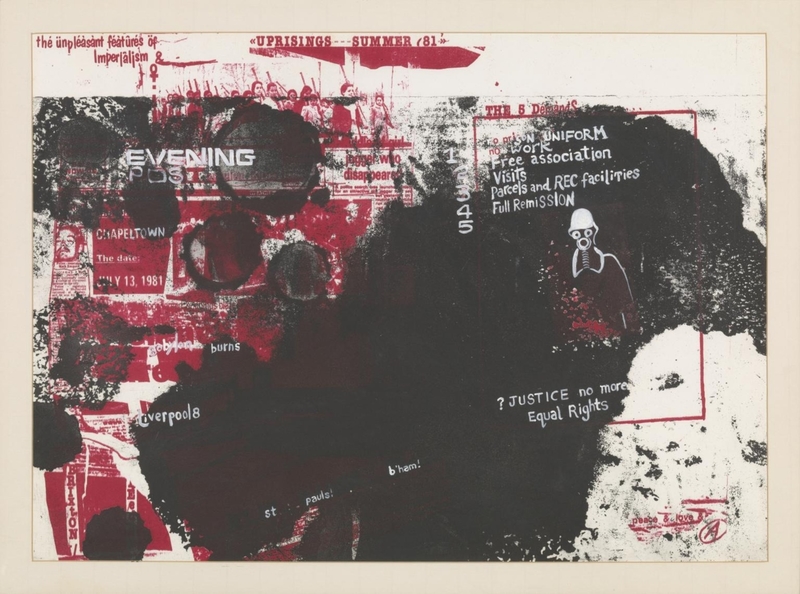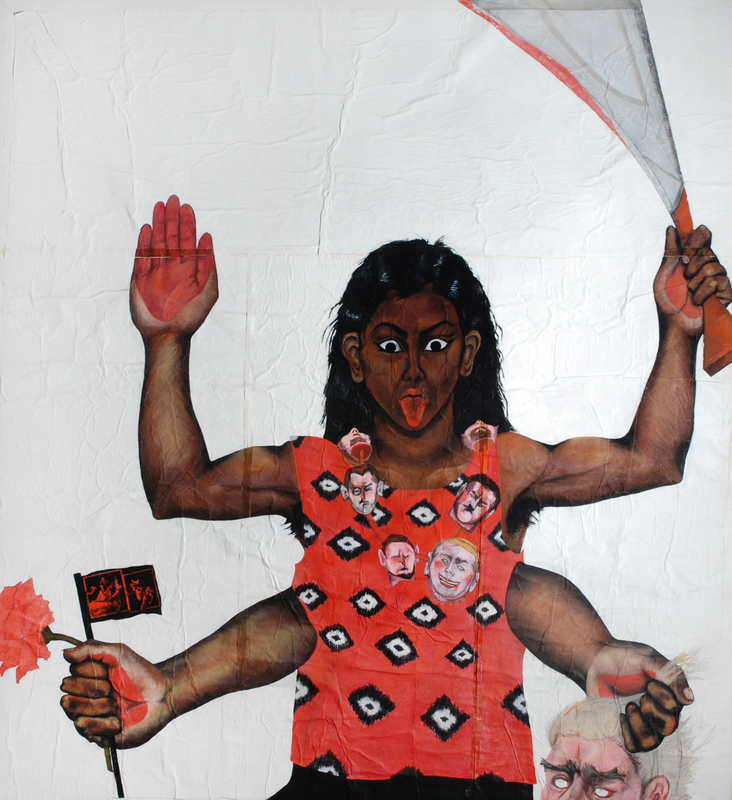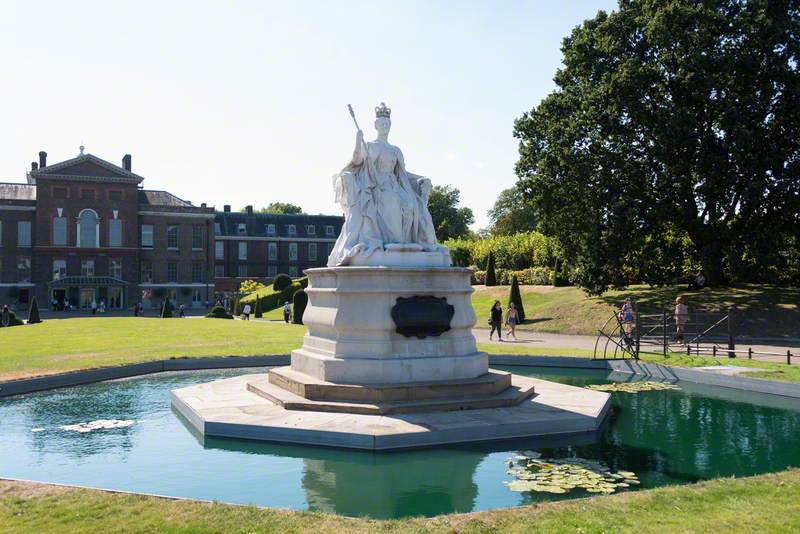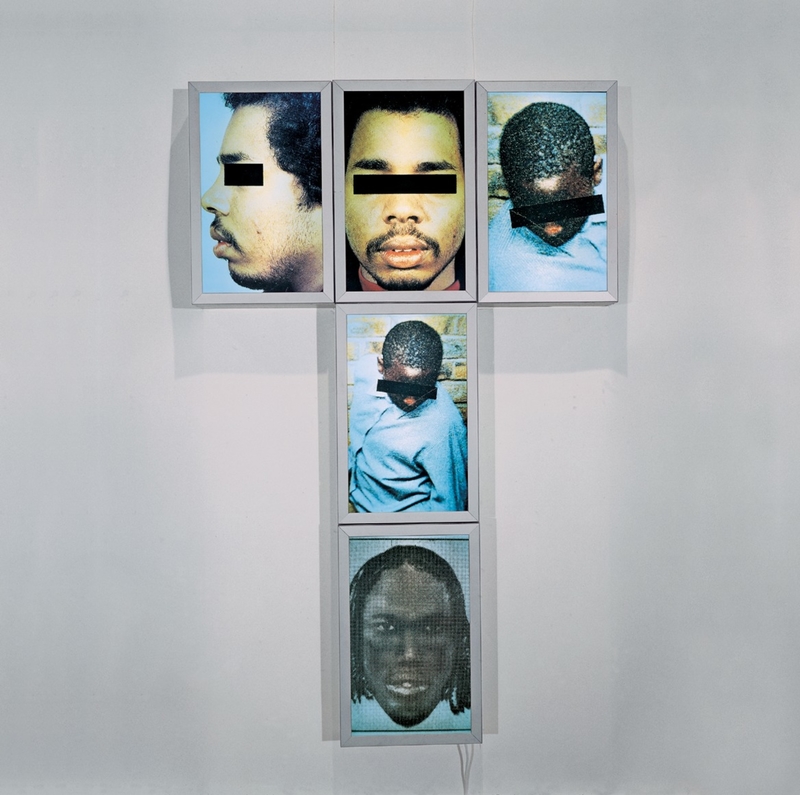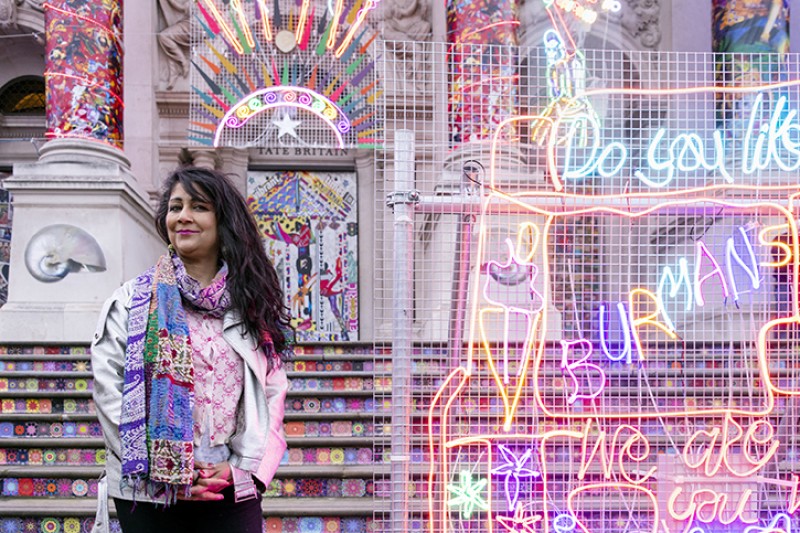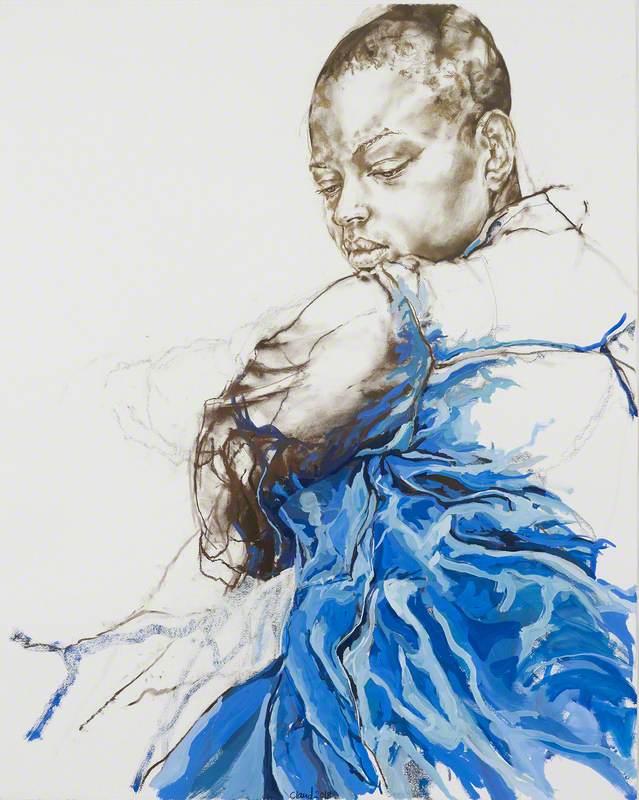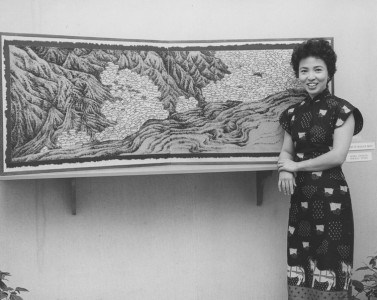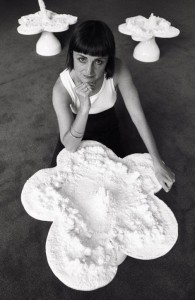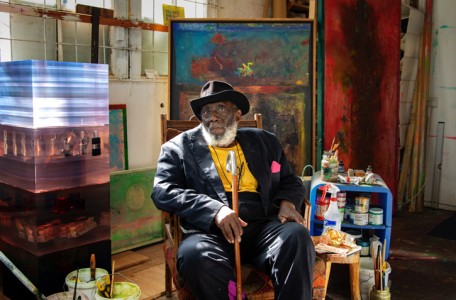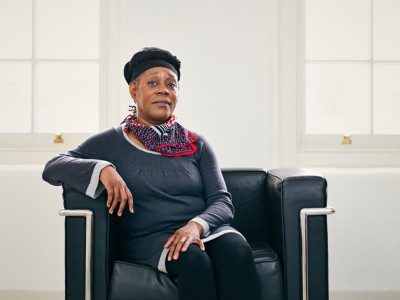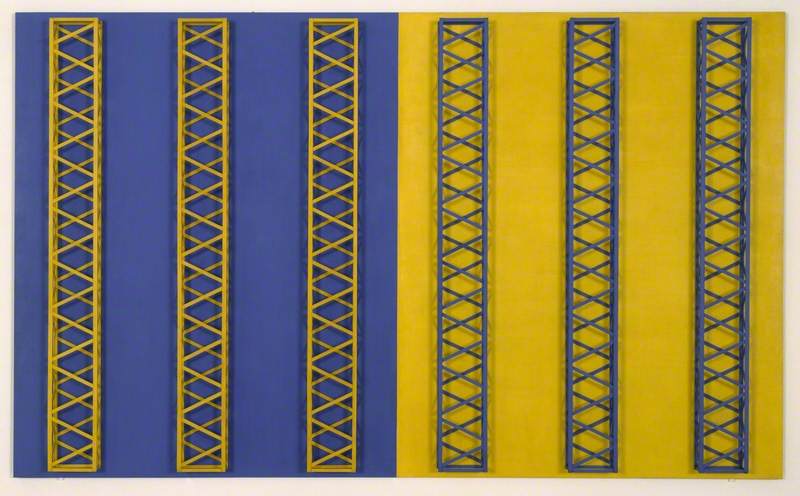Permindar Kaur (b.1965) is a sculptor known for her exploration of material and conceptual ambivalences. Since arriving on the British art scene at the turn of the 1990s, Kaur has paired softness with hardness, domesticity with threat, and the imposing with the invisible.
Permindar Kaur in her studio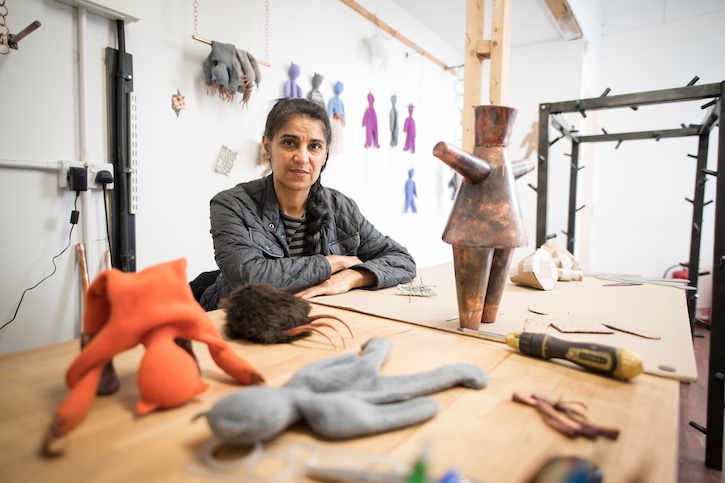
Born in Nottingham, Kaur gained her BA in Fine Art at Sheffield City Polytechnic (1986–1989), followed by an MFA at Glasgow School of Art from 1990–1992. Since her first solo exhibition in 1996, Kaur has gone on to exhibit widely, most recently in 'Nothing is Fixed' at the John Hansard Gallery in Southampton (2024), which included a new sculptural commission. Her work, Overgrown House (2020), can be seen at Sculpture in the Park at Compton Verney until 2027.
Overgrown House
2020, installation view, 'Permindar Kaur: Outgrown', Art House, Wakefield 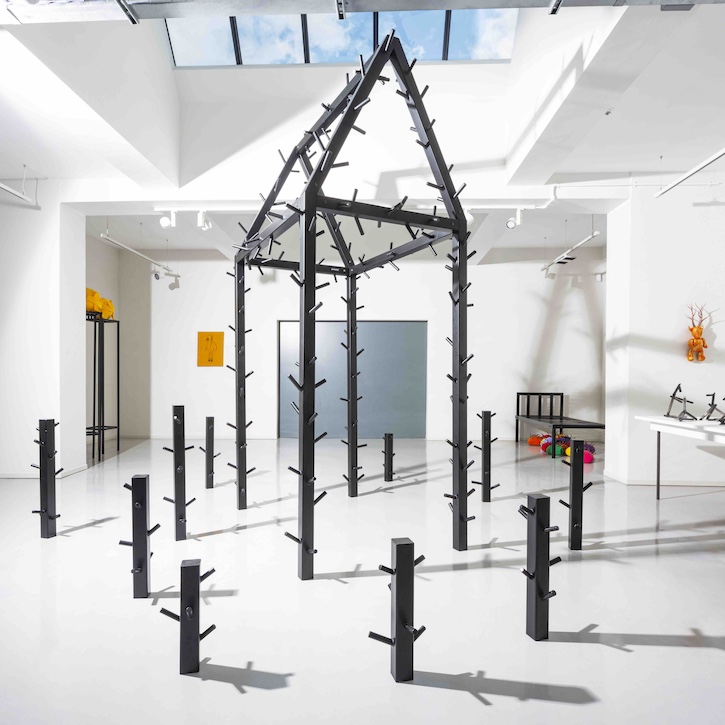
Alina Khakoo: The paradox 'Cold Comfort' was the title of your first major solo exhibition in 1996 at Ikon Gallery, Birmingham; the Mead Gallery, Warwick Arts Centre, Coventry; and the Bluecoat Gallery, Liverpool. How does the phrase 'cold comfort' resonate across the span of your practice from your art school days through to the present?
Permindar Kaur: I really like the title 'Cold Comfort', and I like choosing titles that are opposing in terms because it highlights the contradictory nature of my work. All my work is about a duality between the ideas and the materials I use. I worked out my visual language quite early on, when I was at art school, where I only wanted the work to contain two materials. The most recent dichotomy is fabric and metal, but previously I've used glass and clay.
Ten Teddies
2017, installation view, 'Permindar Kaur: Black and Blue' at New Art Projects, London 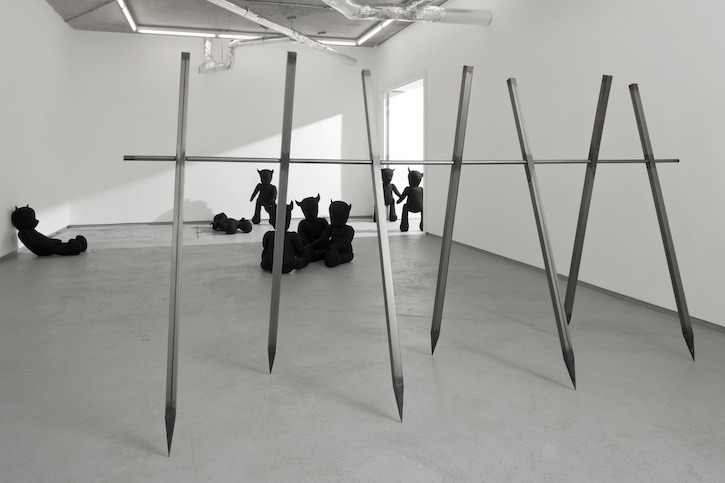
I also wanted the ideas to have this contradictory nature. With my recent work Ten Teddies (2017), for example, you don't know if they are your friend or your foe. Also, it's not clear whether some of my works are about safety or danger. So that title 'Cold Comfort' encapsulates this inherent ambivalence.
Alina: Can you tell me more about your time at art school?
Permindar: At Sheffield, I was on what was called a generalist course: we had the opportunity to work with any medium, but we also had access to the specialisms as well. I tried out everything. And Glasgow was equally supportive, by helping students to enter the professional world. We were a small cohort in both art schools. Because it was so intense, like I said, I knew my visual language early on. This included an emphasis on making everything myself.
Alina: What about your involvement with the British Black Arts Movement?
Permindar: I arrived at the tail-end of the Black Arts Movement. I first started working with Eddie Chambers when he did a touring exhibition about portraiture in 1990 called 'Let the Canvas Come to Life with Dark Faces'. I'd graduated from Sheffield and I made Self Portrait – a two-metre-high head of myself made of steel rods that were welded together. It was built slowly, from the ground up.
Self Portrait
1990, steel and wood by Permindar Kaur (b.1965) 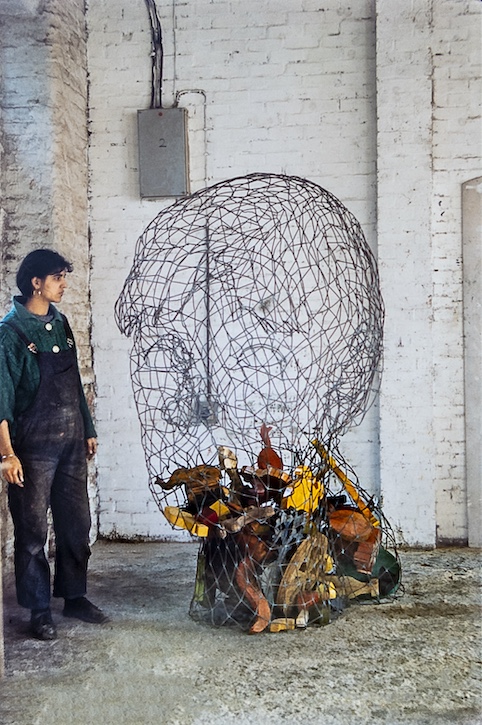
Inside the work, I placed wooden objects which were meant to represent my childhood and which partly filled the head. There's that contradictory nature of my work again, because even though the head is two metres high, it's almost completely invisible. Its invisibility undermines its scale.
I was also associated with the YBAs in the 1990s because I took part in the British Art Show 4 in 1995. But I wasn't a YBA, I was just on the edge; it was the same with the Black Arts Movement. I was always on the edge of things, I think. There were further influences on my work in the 1990s, including a huge interest in psychoanalysis.
Alina: You also had a pivotal stay in Barcelona in the mid-1990s.
Permindar: I moved to Barcelona in 1992, because in Britain I was showing in the Black Arts shows and becoming known as a British Asian artist – I was wary of that. I was young, starting out, and I didn't want to always be doing work about my identity. In Barcelona, I had to rethink how my work was seen in a new contemporary art context. I was learning Spanish, learning how Catalan artists made their work, and learning about their aesthetics. My work naturally changed.
Alina: Can you tell me about your work with cots and beds, and say more about your use of dramatic contrasts of scale and textures?
Cot
1994, fabric, steel and foam by Permindar Kaur (b.1965) 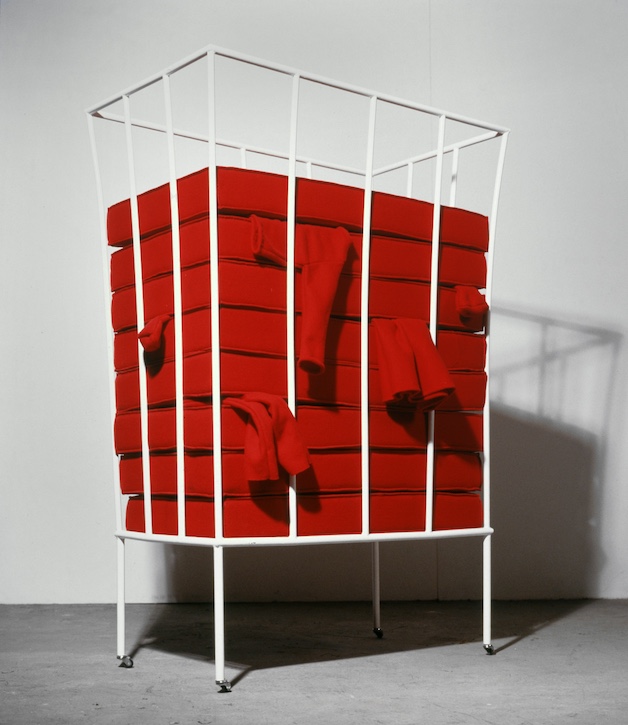
Permindar: I made Cot in 1994, which was an elongated, taller cot than you would expect. It was a white cot that was balanced on little wheels, and I placed eight red mattresses in there. It referenced the story of the princess and the pea, because it had eight mattresses. The work was asking: if someone slept in this cot, would they feel the garments that were stuck in the layers?
I also made my first bed work in 1994. I've been interested in the bed because it's an ideal symbol of the home, of where you feel the most secure. The contradiction in works like Tall Beds (1996), where the beds are three-and-a-half metres high, is that they're not really ideal, safe places to sleep. It was all about safety and precarity, which is a theme that runs throughout my work.
Tall Beds
1996, installation view, 'Cold Comfort', Ikon Gallery, Birmingham 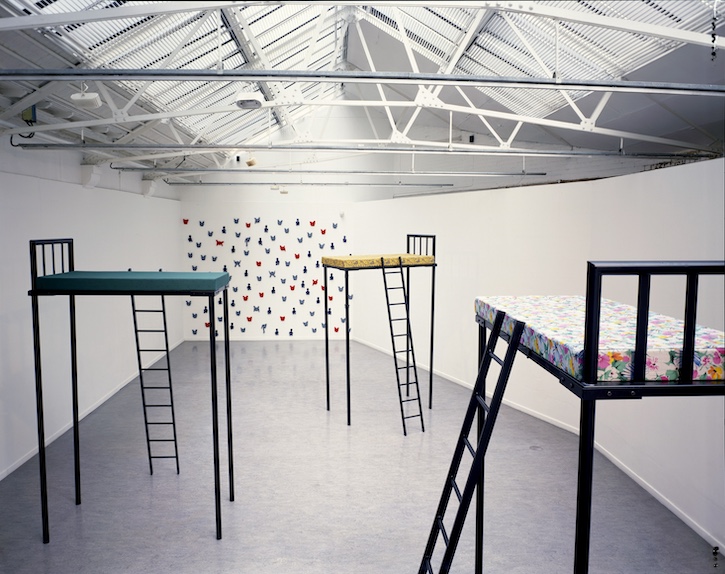
I use scale and texture interrelatedly. Bed With Flames (1996) features a copper bed, it's a small child's bed, so the use of copper makes it more precious – though with its many holes it looks weakened. I wanted to protect it so I covered the holes in red polar fleece, like little blankets, which made the bed look like it's on fire.
Bed With Flames
1996, copper and fabric by Permindar Kaur (b.1965) 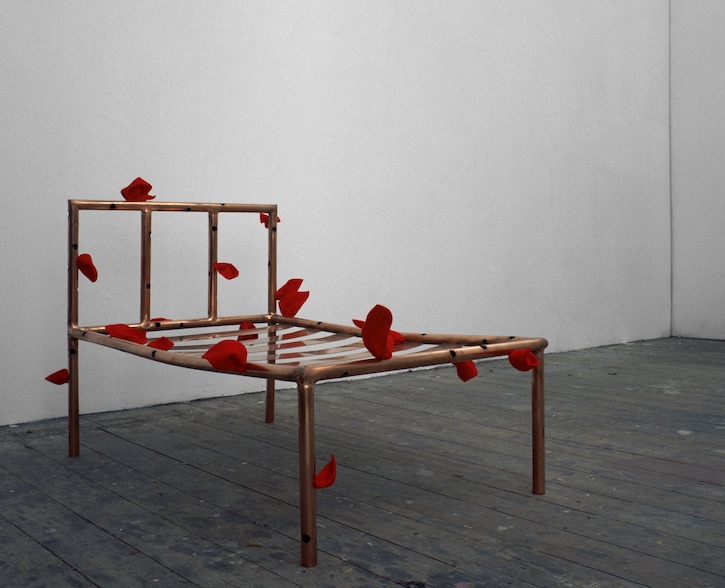
Alina: In your body of work from the mid-1990s, which includes Innocence and Night Dress, you've framed homely, somewhat vulnerable garments, such as child's clothing and a night dress, layered with armour (a kirpan, and a breastplate and chainmail).
Permindar: Innocence was made in 1993, when I was living in Barcelona, where my work was shifting away from cultural identity; yet interestingly, it's the first work I made that consists of a very recognisable Sikh garment.
The colour orange is important to Sikhs, and it has a kirpan, which is one of the five Ks Sikhs wear. Though it's not a real garment, and it's not a real knife – I made them both. The most important question the work raised was: why would a child be carrying a knife?
The other work you mentioned, Night Dress, continued this theme of garments with armour. I think that comes from my Sikh heritage, where weaponry and the ability to defend yourself are important. If you look at lots of Sikh imagery, they have this huge selection of weaponry. Night Dress was, again, a dress, and it had a breastplate and copper chainmail.
In some ways it goes back to the beds, and the duality of safety and precarity that is constant in my work. The dress in Night Dress is not a garment you can sleep in. It's all about protecting yourself, maybe when you're sleeping or when you're dreaming. And, for me, the interesting thing is that armour is not made out of copper, because copper is a heavy metal. It's heavier than steel, but it's also a lot softer. So it would be useless as armour, really, or as a sword.
Alina: Can you tell me about the polar fleece figures you have been making since the mid-1990s?
Permindar: Eddie Chambers recently pointed out to me that there's two strands to my work: there's the furniture, and then there's the figures. More recently I've brought them together, as in Stool (2022).
I started out by making generic, cut-out, flat figures. They don't have faces or any other identifying features. The first work I made with these flat figures was Falling in 1996. I'd folded them into impossible positions and pinned them to the gallery wall. Then I continued using them, exploring them, in different ways.
In the work Independence – made for Nottingham Castle in 1998 to mark 50 years since India's independence and Partition – the figures wore copper boots and helmets. Here these figures are weighed down. They're unstuffed, so the boots and helmets offer no protection. I spear them against a wall with copper spears: complete defeat. The work was about India's independence, but also about the personal idea of independence.
The figures also went through a stage of having claws and antlers. More recently, they're stuffed, they're made from a black woollen fabric, they've got pointed ears, and they've become quite big – some of them about a metre high. They don't need claws or armour, because they're threatening on their own. They're like teddy bears, but not the friendly, cuddly teddy bears from childhood. By changing their colour and giving them pointed ears, suddenly they have a more menacing, darker side.
Shadow Play
2016, copper and fabric by Permindar Kaur (b.1965) 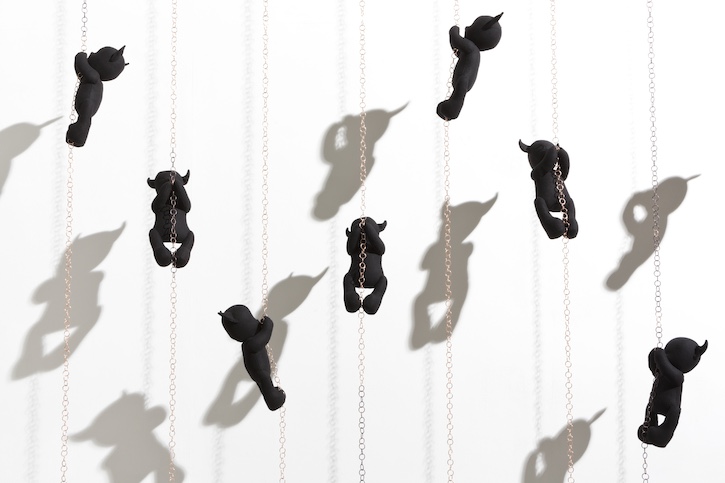
Alina: It's amazing that you've stuck with making ambivalent work for so long. To me, it speaks to how double-edged things such as home and being a child are in the diasporic feminine experience. It's very difficult to live with that ambivalence. Your ability to stay with it over such a long period of time, in your work, is very inspiring.
Permindar: I always wanted my work to be at a point of balance where you didn't know which side the work fell on.
Alina: Lastly, what are you working on at the moment?
Permindar: I have a show coming up at Pitzhanger Manor this summer, which will include some of the works I recently exhibited at John Hansard Gallery, such as Hunting Chair (2024).
Hunting Chair
2024, installation view, 'Nothing is Fixed', John Hansard Gallery, Southampton 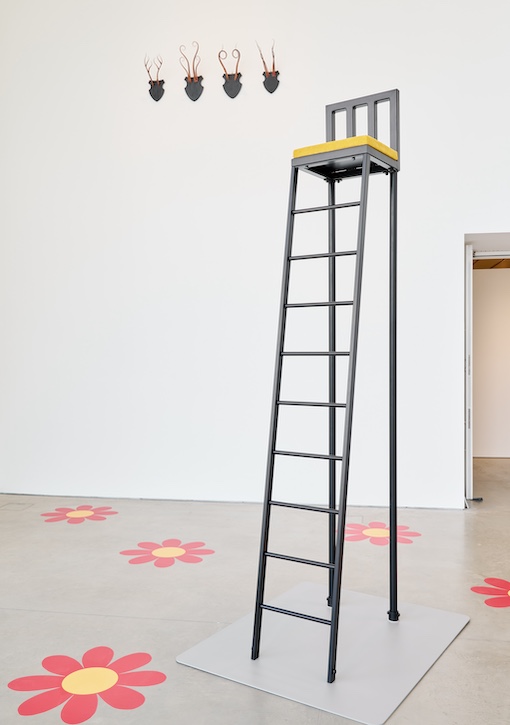
That's going to be interesting, because the architecture of the building is very particular with a strong history – it was initially intended as a country retreat for Sir John Soane and his family. I love trying to develop a work that fits that site.
I'm also working on 'Strange Bedfellows', an exhibition of my work alongside my curated pick from the Ingram Collection, which will be on show at the Lightbox in Woking later this year. Each project challenges and pushes my work in a new direction.
Alina Khakoo
'Permindar Kaur' is at Pitzhanger Manor from 25th June to 21st September 2025
'Strange Bedfellows', curated by Permindar Kaur, is at the Lightbox, Woking, from 15th November 2025 to 1st February 2026
This content was supported by Jerwood Foundation
